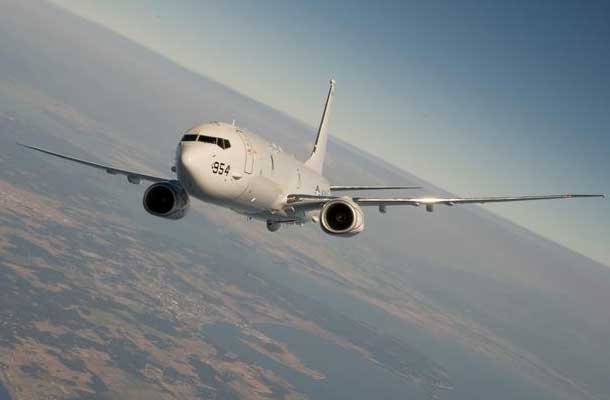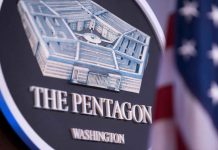
WASHINGTON – INTERNATIONAL NEWS – The Pentagon confirmed on Friday (August 22) reports of what it called a dangerous intercept of a U.S. Navy plane by an armed Chinese fighter jet earlier this week, the press secretary said.
It was like a scene out of the movie Top Gun. The Chinese fighter jet was on a intercept course with the American fighter.
The incident happened on Tuesday (August 19) about 135 miles east of Hainan Island in international airspace, Press Secretary Rear Admiral John Kirby told reporters.
“We have registered our strong concerns to the Chinese about the unsafe and unprofessional intercept, which posed a risk to the safety and the well-being of the aircrew, and was inconsistent with customary international law,” he said.
Kirby also noted that DoD officials believe the Chinese jet made several passes and crossed under the aircraft with one pass having only 50-100 feet of separation.
“The Chinese jet … passed the nose of the P-8 at 90 degrees with its belly toward the P-8 Poseidon, we believe to make a point of showing its weapons load out,” Kirby said. “They flew directly under and alongside the P-8, bringing their wingtips … to within 20 feet and then conducted a roll over the P-8, passing within 45 feet.”
The admiral asserted that the incident undermines efforts to continue developing military-to-military relations with the Chinese military.
“This kind of behavior, not only is unprofessional, it’s unsafe,” Kirby said, “and it is certainly not keeping with the kind of military-to-military … relations that we’d like to have with China.”
On April 1, 2001, a Chinese fighter jet collided with a U.S. Navy EP-3 surveillance aircraft — the P-8 Poseidon’s predecessor aircraft — that was flying a routine mission in international airspace over the South China Sea. Wang Wei, the Chinese pilot whose fighter jet collided with the EP-3, was killed. The damaged EP-3 made an emergency landing on China’s Hainan Island, where its crew was held by Chinese authorities and eventually released.
Kirby said the jet flew 30 feet (10 meters) from the U.S. Navy P-8 Poseidon patrol plane, which he said was conducting a routine mission.








